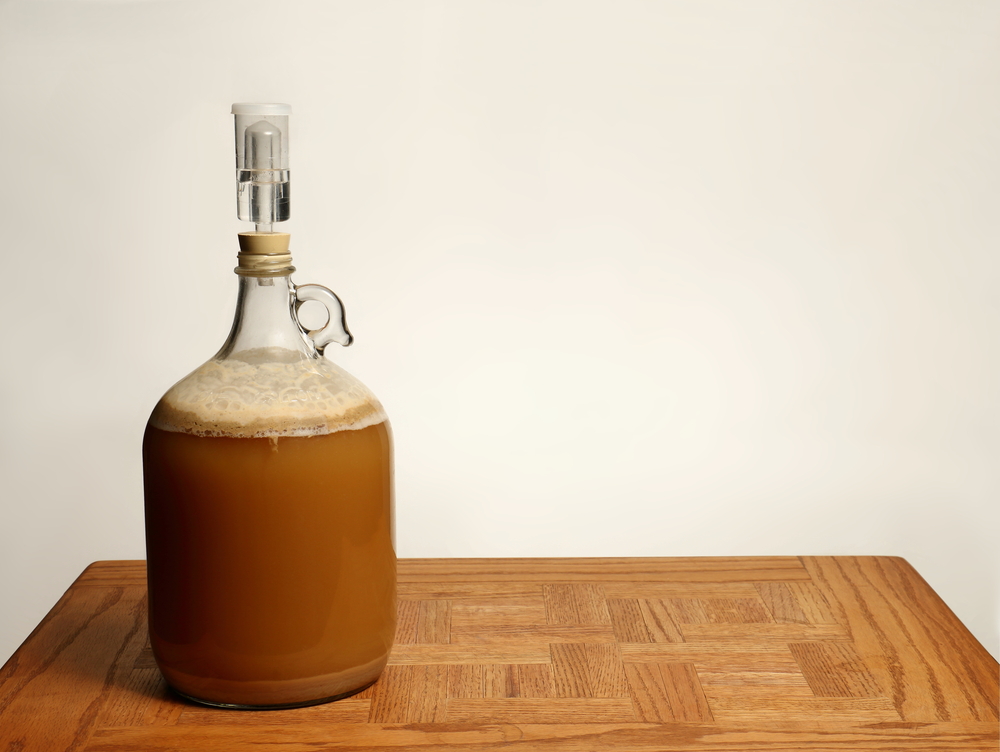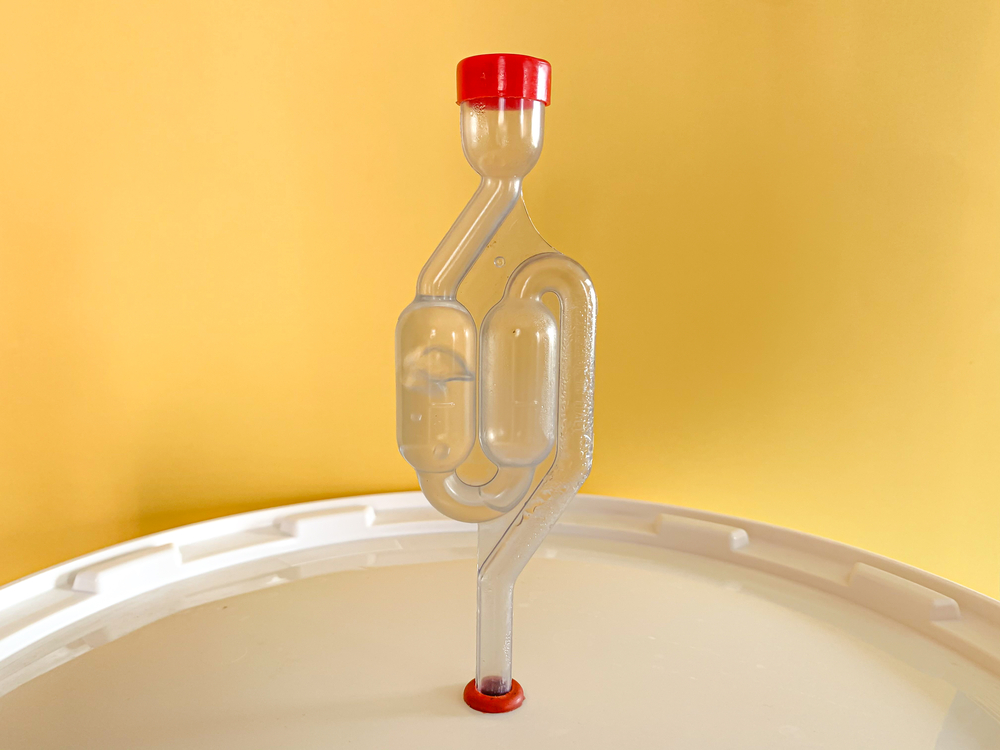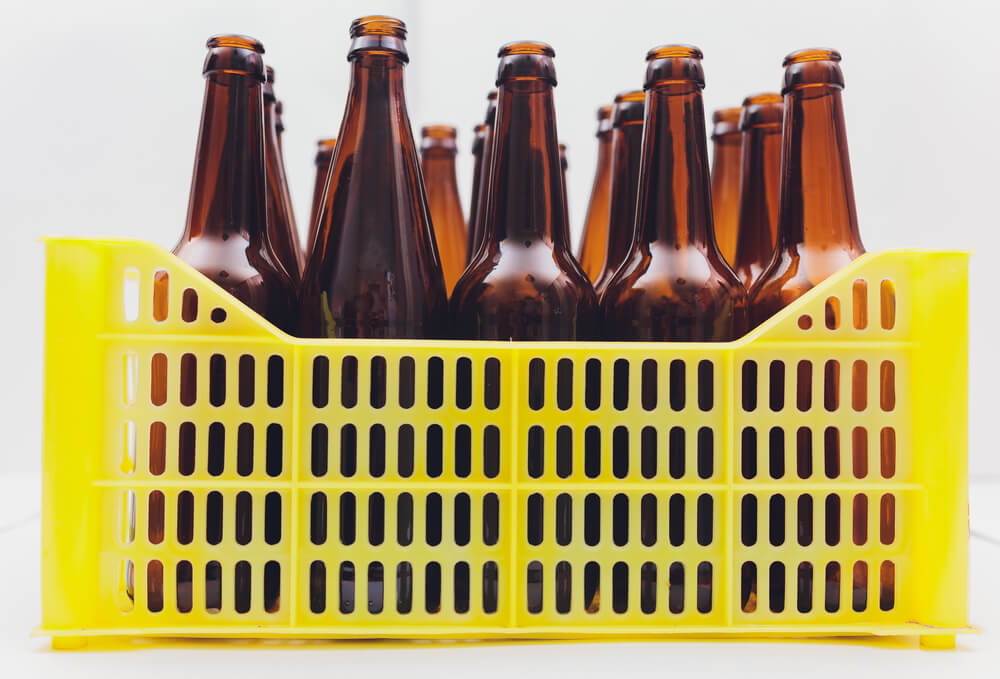In this article, we’ll examine is an airlock necessary for brewing.
The airlock is one of those pieces of brewing equipment that can confuse many first-time homebrewers. It’s a weird plastic contraption that looks like it shouldn’t be as useful as it is.
When we started homebrewing, the folks at our local homebrew store told us that an airlock was an essential tool for fermentation. We’ve fermented with an airlock ever since.
However, the reality is that an airlock isn’t necessary for homebrewing.
Airlocks provide some great benefits for your brewing process. Understanding when you should use an airlock and when it can be skipped is an important educational step for anyone invested in home brewing.
What is an Airlock?

Before we jump into how and when to use an airlock, it’s handy to know what an airlock is. And before we dive into what an airlock is, here’s a reminder on how fermentation works during the brewing process.
Airlocks are usually used during the fermentation process. After you pitch the yeast into your wort and close the fermenter, the yeast begins to consume the sugars in the wort. Like any other living organism, yeast when they “eat” creates a by-product or by-products from their metabolic processes (i.e., digestion). In the case of beer yeast, the by-products are alcohol and carbon dioxide (CO2).
We want the alcohol in our fermenter, but CO2 isn’t as desirable. If you get too much CO2 in your closed fermenter, and you’re not using an airlock, your fermenter can explode. Yes, that’s right. It will explode, and then you’ll have neither alcohol nor beer to work with.
The airlock is a handy piece of equipment that allows CO2 to escape from the fermenter without letting outside contaminants into your beer. As you wander through your homebrew store, you’ll find that there are a couple of different styles of airlocks, they all work the same, and they all create a sterile, yet safe way for CO2 to be released from your fermenter.
When to Use an Airlock
We would say that an airlock is important for almost every beer’s primary fermentation. There are exceptions to this rule, which we’ll discuss later.
Your airlock should be installed on your fermenter immediately after pitching the yeast and closing the fermenter. If you’re using a carboy-style fermenter, you’ll need to invest in a cork or cap that has a place for the airlock to be installed. If you’re using a bucket fermenter, look for options that have a hole pre-drilled into the lid, with a gasket for the airlock.
In this case, the airlock does two things for your primary fermentation. First, as we discussed, it provides a way for CO2 to escape from the fermenter and keeps your beer from exploding. Exploding beer might sound fun, but your significant other probably won’t be keen on beer all over the space you’ve stored your fermenter.
Second, the airlock creates a sterile environment within your fermenter. If you’re looking to keep your beer free of off-tastes that unwanted bacteria, yeast, or fungi can create in your beer, an airlock is the best tool. Airlocks are filled with a small amount of water with sanitizer mixed in. This water barrier allows gas to pass through but keeps unwanted organisms out of your beer.
When Can I Skip the Airlock?
Most of the time, if you’re just doing a single fermentation, we would say that you always need an airlock. However, there are times that you may want to skip the airlock altogether or use something else.
You can skip the airlock altogether if you are brewing beer styles like sours or farmhouse ales. These beers derive their unique flavor profiles from natural yeasts. You may want to start your beer with a small amount of yeast, but then leaving it open to the air allows exposure to the air and natural yeasts. In this case, an airlock is obviously not necessary.
The other time you can skip the airlock is during secondary fermentation. Because most of the sugars in your wort have been consumed, the amount of CO2 created during secondary fermentation is minimal. An airlock is redundant. In this case, simply close your fermenter to keep the environment sterile.
Finally, there may be times when you want to use a blow-off tube instead of an airlock. A blow-off tube works much like an airlock but has different benefits. A blow-off tube is a section of tubing that is inserted into the fermenter, using the same hole you’d use for the airlock, and the other end of the tube in a container of water mixed with sanitizer.
This arrangement is great for beers that use aggressive fermenting yeast that may create a lot of krausen. The blow-off tube allows krausen to exit the fermenter, without creating any blockages. The blow-off tube can also be handy if you’ve ended up with more wort than you had anticipated.
When it comes to airlocks, we would suggest that in most cases they are a necessary part of your homebrewing process. They provide a safety feature for your fermenter and keep a sterile environment within the fermenter.
However, there are times when you can skip the airlock and you’ll be just fine. It’s not a huge investment to your homebrewing tool kit, so if you don’t have one, we’d recommend adding one, just in case you need it.



